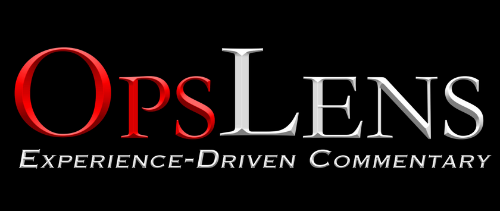As any of you who read this column on a regular basis know, I’m a traditional conservative with a wide libertarian streak on domestic issues. But as you also might know, I spent two decades working in and running political campaigns, mostly GOP, in the Mid-Atlantic states. If you count the time I spent learning ops, starting as a volunteer at nine years old in 1970, I’ve been involved with hundreds of campaigns. That is until 2009, when I left for academia and non-profits. Voters the world over rejoiced when I left because I was good at my job. Which was, to manipulate them.
Not, granted, Connie Brean good at my job. But still damned good.
That’s why this week, as part of a pre-midterm series, I’ll forego the usual partisan fun and take the opportunity to act as kind of a Consumer Reports when it comes to political media. That’s where I spent most of my time in the game, focusing on broadcast production and media buying. Given my background in intel work, I just saw it as psyops.
The operational basics, though affected by ideology to a point, are the same for the two major parties. Perhaps we can break down the messages and delivery systems to give you a better chance of not being manipulated by slimy mercenary bourbon-swilling political consultants…like I used to be. Not that I’m not a mercenary anymore, just somewhat less slimy and more bourbon-swilling.
Political types know that average voters are motivated more by emotion than by reason or logic. Don’t think so? Read political posts on Facebook for five minutes. Anyway, as such, media producers and buyers will make sure the message gets you angry or hope-filled, but not thinking. Because if you think, you could possibly think to vote against their client. What they’re looking for, as voting is a POS (Point of Sale, not the other acronym) action, is a Pavlovian response. Hence the absurd hyperbole on both sides of the aisle, as it stirs up the peasantry, who will hopefully come to the voting brandishing their indignant torches and pitchforks or dissolve in a puddle of sentimental tears.
My operational avarice even motivated me to use my own young daughters, gliding down a slide in a public park, in a broadcast ad for a county sheriff. The message implied that the sheriff would protect the innocence of childhood from the depredations of an unknown threat. This in a county where the sheriff’s office was primarily a judicial and penal appendage and had little law enforcement duties. But, the voters didn’t know that. Won the race.
Used same park in a judicial contest to get a lanky man, a very qualified lawyer, elected on the basis of his height by surrounding him with little kids at play in the background and, at the key moment, having a blonde urchin exclaim, “(Name), Standing Tall for (County Name)!” We heard most on the campaign trail about the cute kids. Won the race.
On the attack side my oppo elves found out an opposing candidate, running against our mediocre incumbent, owned urban rental property. We immediately thought, slumlord. The state party hired us to exploit the insinuation and we produced a gloriously disingenuous spot that implied, though the rental owner had only signed the paperwork on the holy day, that he evicted a family from their apartment on Christmas Eve. He did no such thing and the voters rejected our sleight of hand, burdening us with a deserved loss. Though, as we slavishly adhered to Rule One in political consulting, we still got paid.
I could go on.
Knew an educated person who told me that she supported a certain candidate, in this case non-candidate Colin Powell, for president because she thought “he cared” about her. When I pointed out she had never met Powell and thus had no connection with him, making him unlikely to “care,” she was not at all happy. Then I rubbed it in by telling her that I had actually met Powell for a millisecond in a doorway of the V Corps barbershop in Frankfurt, in then-West Germany. I was a gormless PFC and he was a general and corps commander. That brief encounter did not give rise to a magical bond with Powell. I was merely a green cog, I so related. She again was not very pleased.
At any rate, don’t fall prey to the Emo School of Politics. Be ready to discount as agitprop ads you see that ominously shriek to the high heavens or use warm and fuzzy optics with kids, weddings, sunrises, and animals to make you feel all gooey inside. Though I love this Hal Riney spot, it fits the bill.
Instead consider as legit the ads that make factual and well-sourced comparisons on policy differences between the candidates. I know, sounds dry. But let the hoi polloi fall for the sob sister stuff or the unicorns and rainbows. You’re the smart voters, the elite voters, the Kamioner readers. You comprehend on a higher level. Well, probably.
Remember there are many things other than the straight message that comprise ops in the persuasion business. The music, color bar, and editing (My Gawd, what you can do post-production), will determine the power of the ad’s message as much, if not more so, than the mere text. Music manipulates mood and pace. It elicits emotion. Don’t fall for it.
There’s also much effort put into where you will see the spot. The choice to buy online, cable, broadcast, etc. does much to customize the message because political ops types have a good idea, through intuition, experience, and data, of who is watching what. Like in the rest of politics, people who watch media usually behave the way they’re supposed to behave given demographics. So I know to use a certain pitch when I buy the Golf Channel and another pitch when I buy Nick at Nite. The former generally sports upscale males as viewers. The latter younger parents watching with kids. And as they say, when in Rome wear a toga.
There are, of course, other simpler forms of message delivery. Direct Mail and yard signs come to mind. Both are anachronistic, but can give you a small punch when you need it at the end of a close race. In this online environment direct mail, especially the overuse of it, is seen as junk mail. Why is it still used? Older voters seem to respond to it and mail houses have sweetheart deals with political firms predicated on the firm convincing the client to use them. Yard signs can be an eyesore and an irritant to voters. They are used to gain name recognition and engender community support. They do both worse than strategically placed billboards. And when a bunch are clumped together you get what is referred to in the business as ‘The Easter Island Effect.” Like those heads on the island, you only see them as a group, none standing out and thus none having positive name recognition effect.
The only way to mitigate this is to go out on a midnight commando raid Sunday night before the election and inundate the district with signs at places, if possible, that your opponents ignored. Best locale, traffic choke points. Extra points for fresh-faced sign wavers at said choke points during morning and afternoon commutes, to grab voters on their way to vote. Remember POS. Back to yard signs, they won’t be up long enough to annoy and will show newness, peak timing and, albeit manufactured, momentum. All ops, not ideology.
Thus is your inoculation to some tricks of the trade. As the season proceeds we will deconstruct spots to shove away the hocus pocus and get to the validity, or not, of the message. Both GOP and Dem spots will be up for scrutiny, as spin doctors of both tend to be clever and subtle in mission, even if blatant in tone.
Until then, Caveat Suffragari!
















